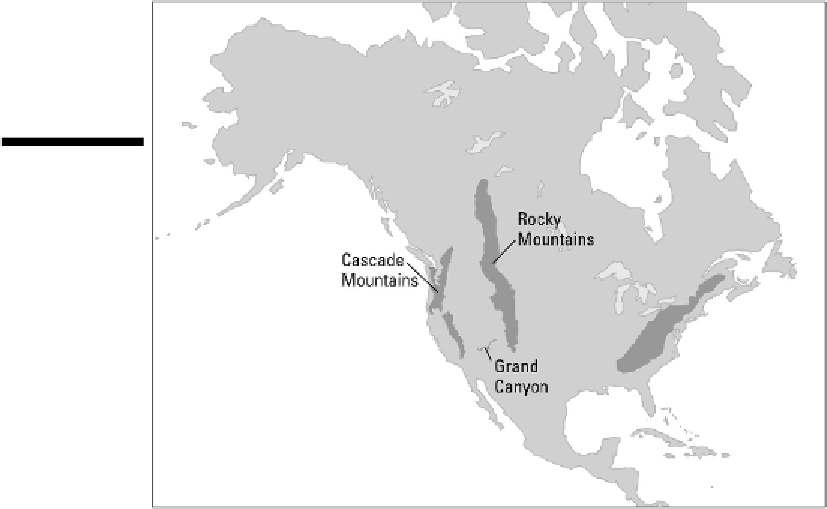Geology Reference
In-Depth Information
and continental arcs through subduction processes. (I describe these features and pro-
cesses in detail in Chapter 10.)
Consuming the Farallon Plate
In Chapter 20, I explain that the North American Plate and Farallon Plate moved toward
each other during the Mesozoic era, building the Rocky Mountains through compres-
sion, deformation, and uplift of the earth's crust. At the beginning of the Cenozoic, the
Farallon Plate continued to subduct beneath the North American Plate. However, in-
stead of diving steeply downward, it moved at less of an angle, sliding under the North
American plate. The result is evident in the changing patterns of mountain building
across North America. Whereas the Mesozoic episodes of mountain building activity
produced volcanic mountains along the western coast of North America, the early Ceno-
zoic mountains were formed farther inland by the lifting and deforming of the crust into
the central Rocky Mountains, stretching from Colorado north into Canada. These and
other features of North America are illustrated in Figure 21-3.
Figure 21-3:
Geo-
graphic features of
North America
formed during the
Cenozoic.
By a little more than 40 million years ago, the mountain building pattern in western
North America shifted back to volcanic activity along the coast. The Cascade Mountains,
illustrated in Figure 21-3, stretch from northern California through Oregon and Washing-



